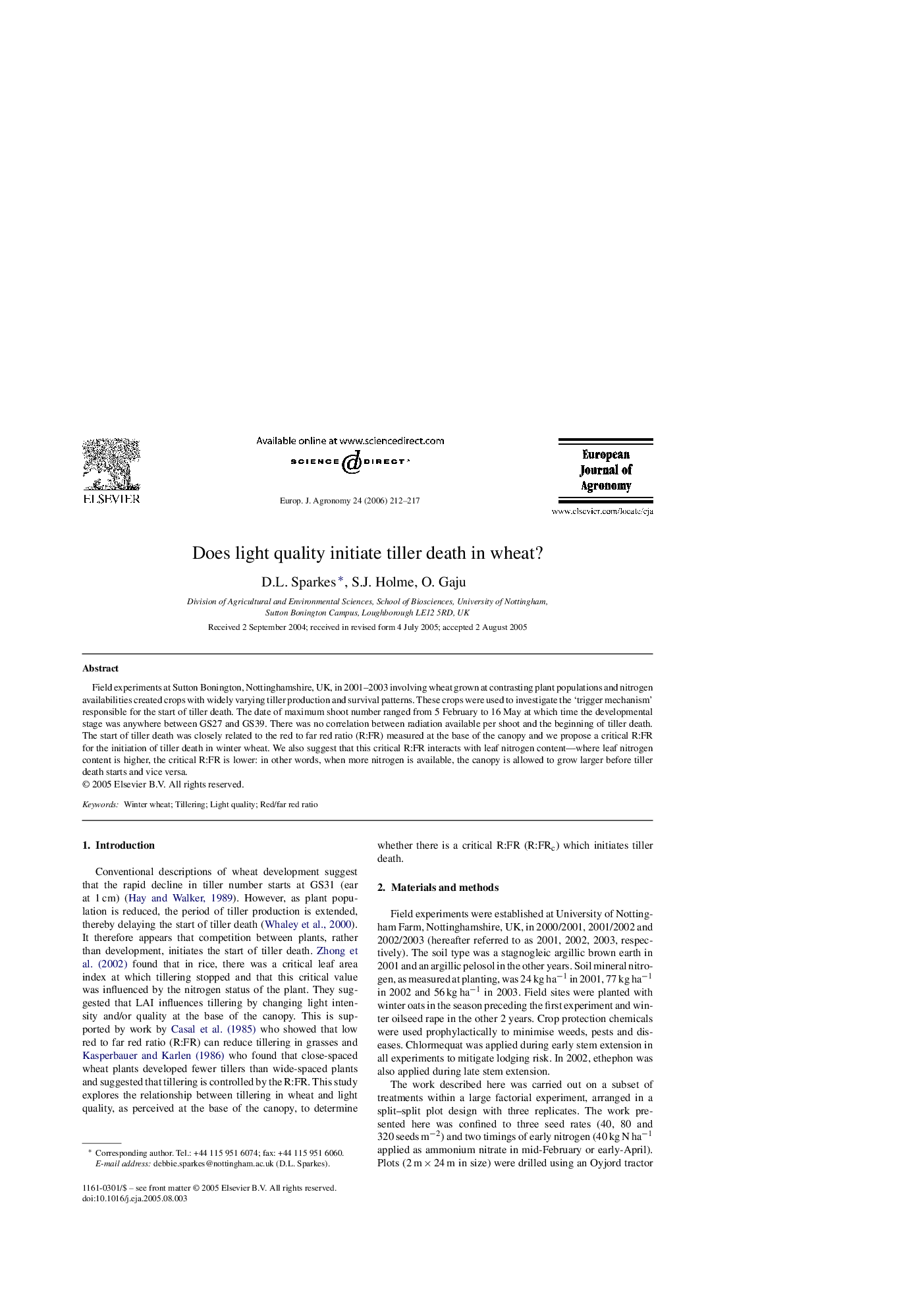| Article ID | Journal | Published Year | Pages | File Type |
|---|---|---|---|---|
| 4509775 | European Journal of Agronomy | 2006 | 6 Pages |
Abstract
Field experiments at Sutton Bonington, Nottinghamshire, UK, in 2001-2003 involving wheat grown at contrasting plant populations and nitrogen availabilities created crops with widely varying tiller production and survival patterns. These crops were used to investigate the 'trigger mechanism' responsible for the start of tiller death. The date of maximum shoot number ranged from 5 February to 16 May at which time the developmental stage was anywhere between GS27 and GS39. There was no correlation between radiation available per shoot and the beginning of tiller death. The start of tiller death was closely related to the red to far red ratio (R:FR) measured at the base of the canopy and we propose a critical R:FR for the initiation of tiller death in winter wheat. We also suggest that this critical R:FR interacts with leaf nitrogen content-where leaf nitrogen content is higher, the critical R:FR is lower: in other words, when more nitrogen is available, the canopy is allowed to grow larger before tiller death starts and vice versa.
Keywords
Related Topics
Life Sciences
Agricultural and Biological Sciences
Agronomy and Crop Science
Authors
D.L. Sparkes, S.J. Holme, O. Gaju,
